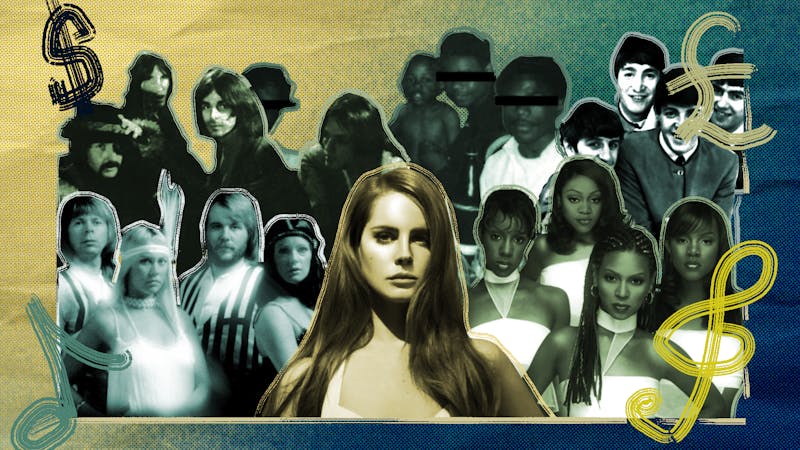American money is boring—dull colors with even more dull people on the bills. Unlike the crumpled, musty green U.S. dollar bill shoved down your pocket, money from around the world is cherished because of its glossy finish, brightly colored designs, and display of interesting characters.
While people prefer to use Apple Pay or credit cards instead of paper money, there is a sense of belonging that comes with physical money. The texture, the smell, and the looks, all contribute to the pride of one’s country.
At Penn, international students cherish the money from their countries as a size–friendly trinket to remind them of home.
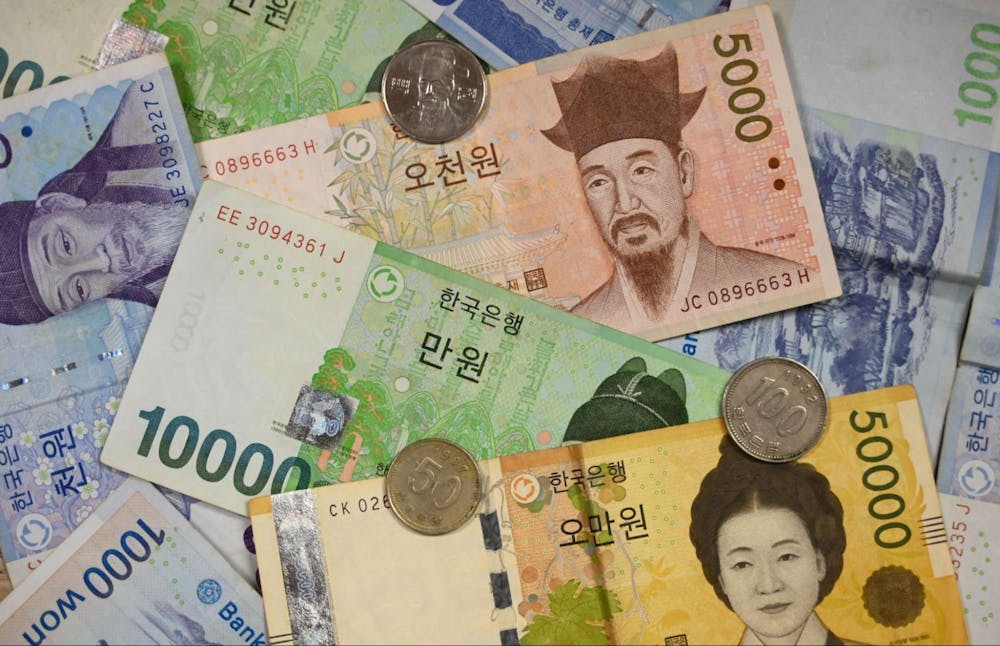
South Korean Won in bills and coins (Jean Park/34th Street Magazine)
The South Korean won, ranges from ₩1,000, ₩5,000, ₩10,000, and ₩ 50,000 and is roughly equal to $.75, $3.75, $7.50, and $37.50 USD respectively.
Audrey Hwang (C ‘27), an international student from South Korea, reflects on why her country’s currency is special to her: “It has a more diverse range of colors compared to American dollar bills.”
The won displays important events and architecture in Korean history on vibrant colored bills in red, blue, green, and yellow. Not only does this make the money pleasing to the eye but it also honors the rich history of South Korea.
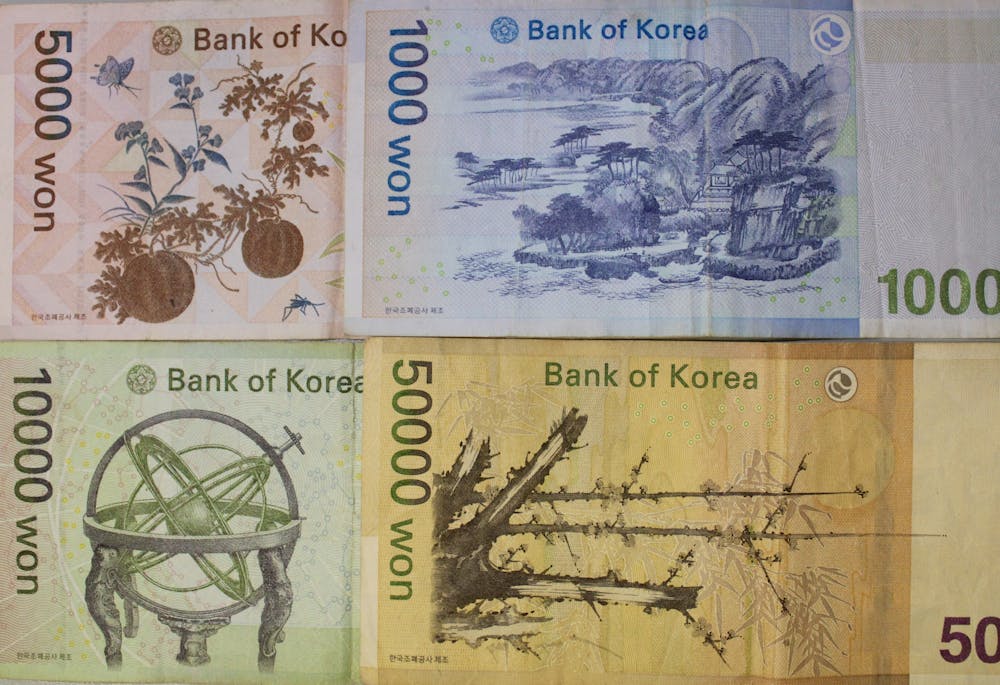
While American dollar bills prominently feature white men, the ₩50,000 won features Shin Saimdang, a female artist from the Joseon period. Her presence on the bill shows female empowerment and brings to light the conversation about gender inequality in South Korea.
The Bulgarian lev has denominations of 1, 2, 5, 10, 20, and 50 leva which is roughly equivalent to $.55, $1.11, $2.77, $5.53, $11.06, and $27.66 USD respectively.
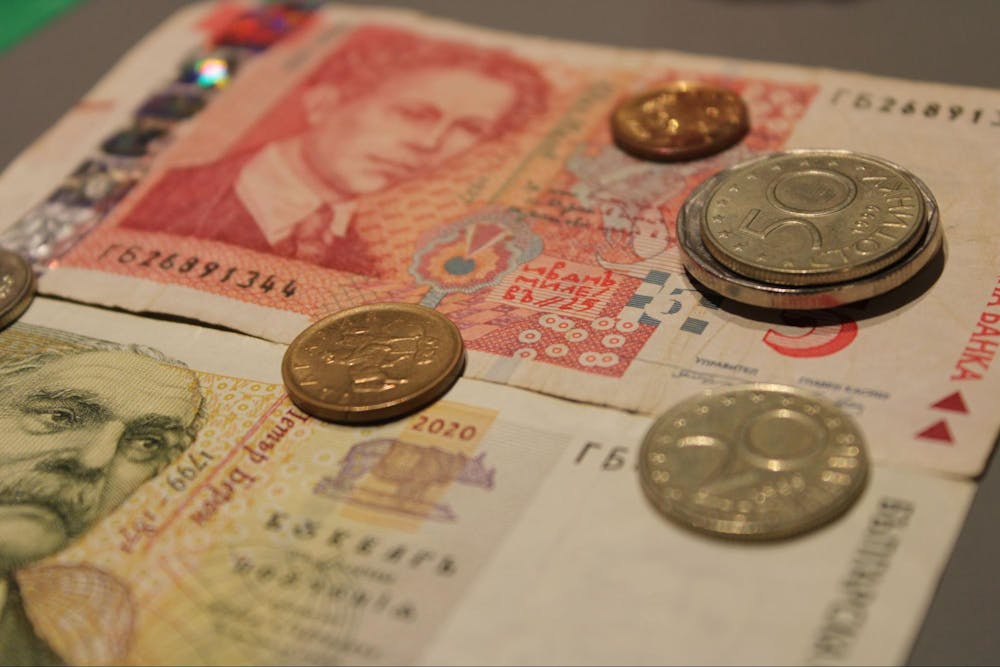
Bulgarian student, Miraya Gesheva (C ‘26) explained that she “was always taking for granted how colorful and pretty Bulgarian money is until I came to the U.S. and started getting accustomed to the signature green of the dollar bills.”
The name of the currency, “lev,” translates to lion—the official symbol of the country since it regained its independence from the Ottoman Empire in 1878. This symbol and the currency hold a significant importance to Bulgarian history.
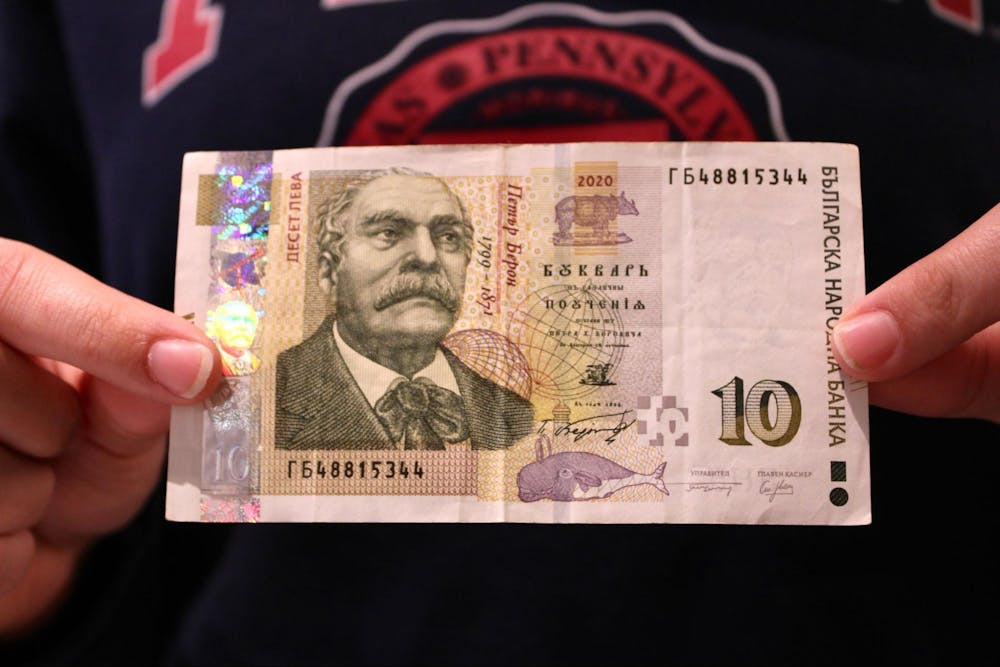
The lev features historic figures such as Pencho Slaveykov, a famous poet, Aleko Konstantinov, a fiction writer, and Petar Beron, an educator and writer. On each bill, there are symbols connecting to the legacy of the person on the lev. On one side of the two leva, Saint Paisius of Hilendar, the author of the first written Bulgarian history, is featured and on the other side displays text from his book.
Miraya reflects on her country’s money: “What I always found most interesting when I was younger was the text written in the old Bulgarian alphabet that is featured on some of the banknotes.”
However, because Bulgaria is within the European Union, the euro has become much stronger than native currencies such as the Bulgarian lev. Miraya fears that will “cause a debate to happen between people who prioritize the economic benefits of this change and those who consider it a form of cultural whitewashing.”
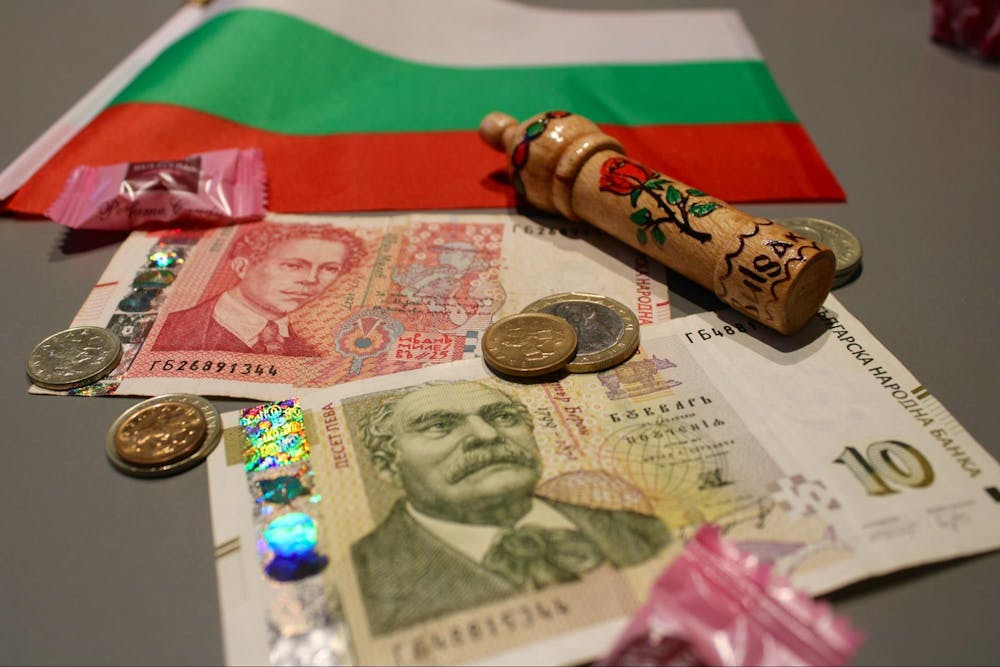
In Chile, the peso has six coins which are $1, $5, $10, $50, $100, and $500 pesos. These roughly equal to $.0010, $.0051, $.010, $.051, $.10, $.51 USD respectively.
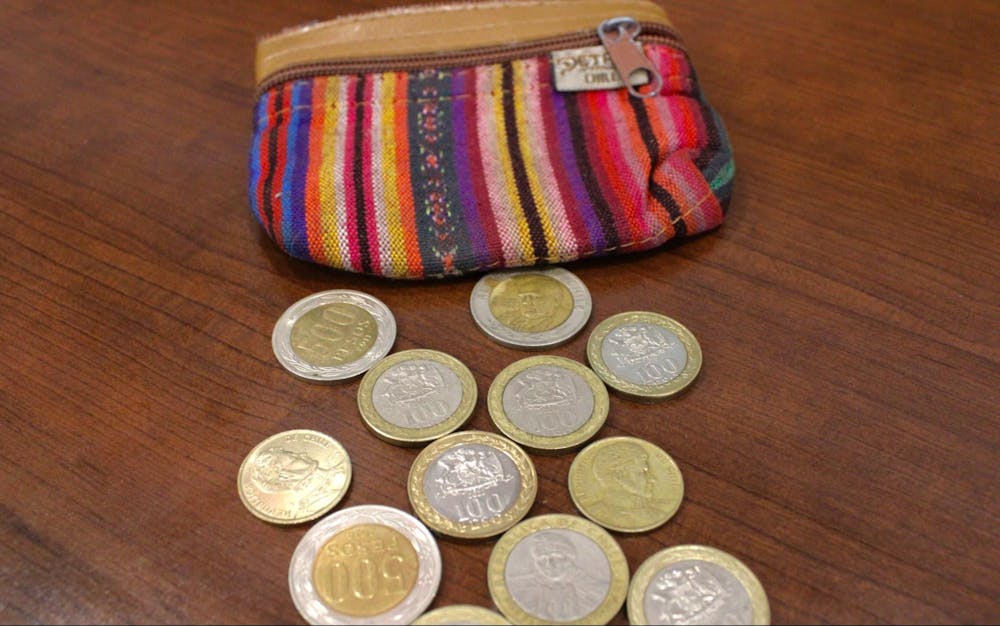
Amanda Hunt Cid (C ‘27), a student from Chile proudly shared that “these are the coins of my country, Chile”.
On one side of the coin, there is a coat of arms that is composed of two endemic species, the condor and the huemul. On the other side of the coin features a portrait of a national hero, such as Bernardo O’Higgins, a key figure in Chile’s fight for independence.
Amanda explained that there is the face of a Mapuche woman who is one of the main indigenous groups in Chile featured on the 100 peso coin. On the 500 pesos coin, Cardinal Raúl Silva Henríquez, a Catholic priest and leader of social movements for the poor is displayed. These coins highlight the complex history that mixes Chile’s indigenous and Catholic influences.
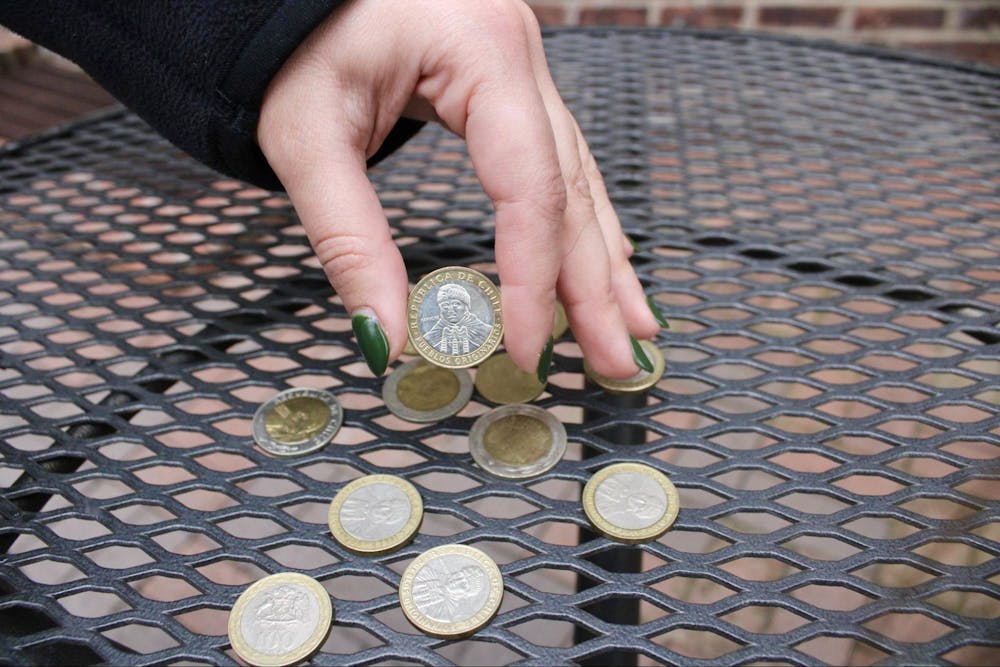
The Trinidad and Tobago dollar has six dollar bills which are $1, $5, $10, $20, $50, and $100. These are roughly equivalent to $.15, $.74, $1.47, $2.94, $7.36, and $14.72 USD respectively.
Reshana Ahamad, a student from Trinidad and Tobago (C ‘27) shares that the “T&T dollars are so colorful just like our culture.” She emphasizes that the bills display national emblems like the steel pan, national birds, and places that all contribute to the cultural significance of the country.
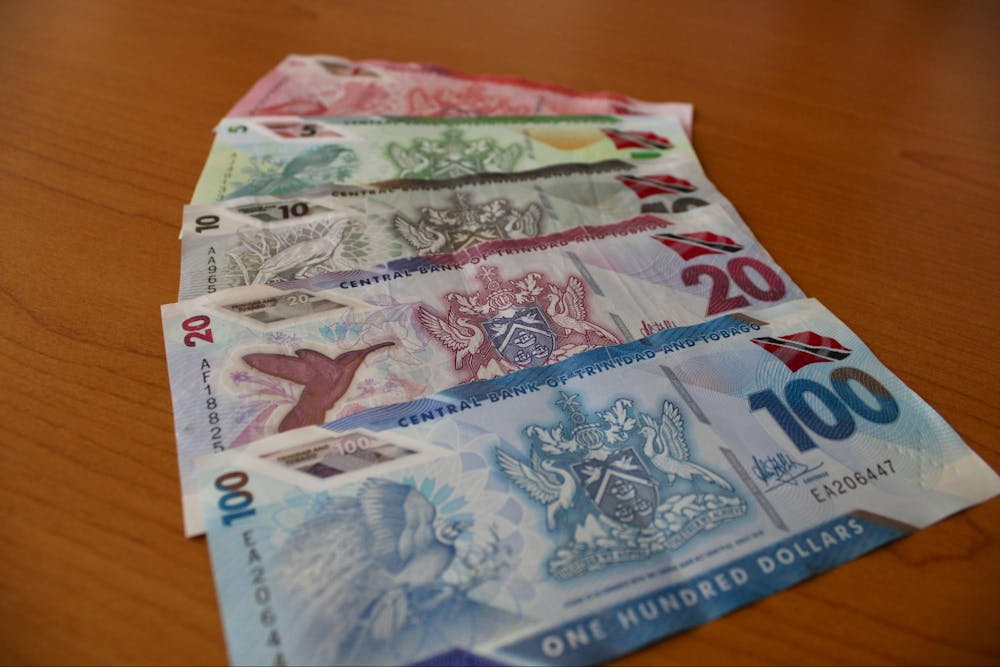
The bright colors of her country’s money not only hold a special place in her heart but help her to distinguish between the different bills. Reshana shares a common international student story, highlighting the importance of colored money. “I, for one, as an international student living in the States for the first time, have definitely fumbled at a cash register many times,” Reshana says. This is because all U.S. dollars look identical with the “same shade of green.”
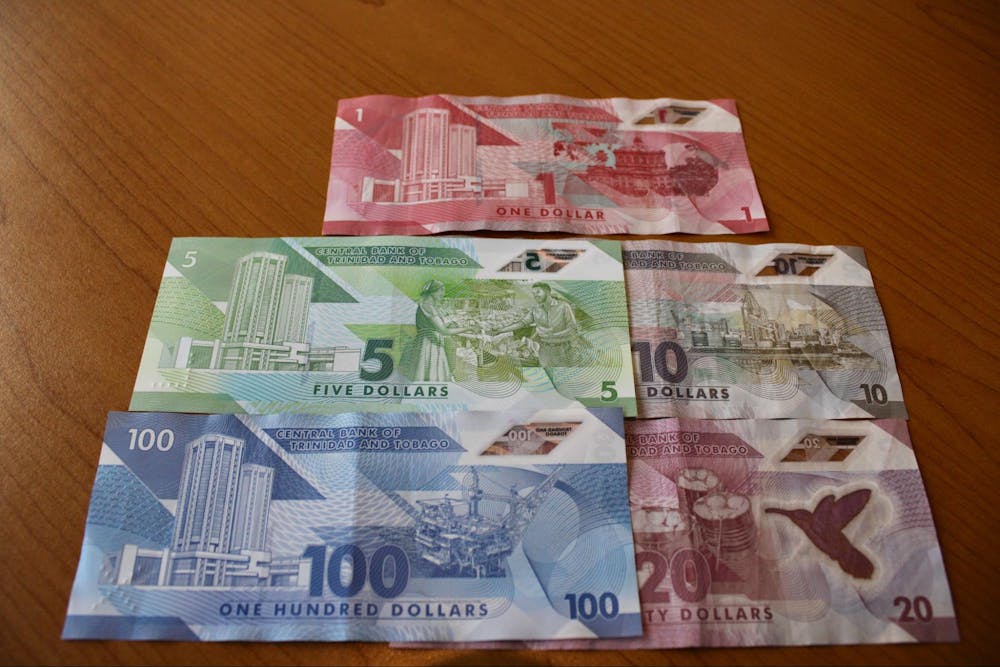
Under British colonial rule, Trinidad and Tobago issued banknotes made from cotton or cotton–like material. However, they began a phased transition from cotton–based money to polymer starting in 2019 and completed the transition by 2022. The polymer material is more durable and has a shimmering colored ink as you move the dollar through light. Reflecting on this change, Reshena shares that “everyone seems to love the sleeker, cleaner feel of them.”
In 2016, Zimbabwe introduced “bond notes” as a form of pseudo currency. Currently, the country is operating on a multi-currency system in which other country's currencies can be used, including the U.S. dollar. In 2019, the government introduced Real-Time Gross Settlement (RTGS) dollar as the official currency, which was a digital currency.
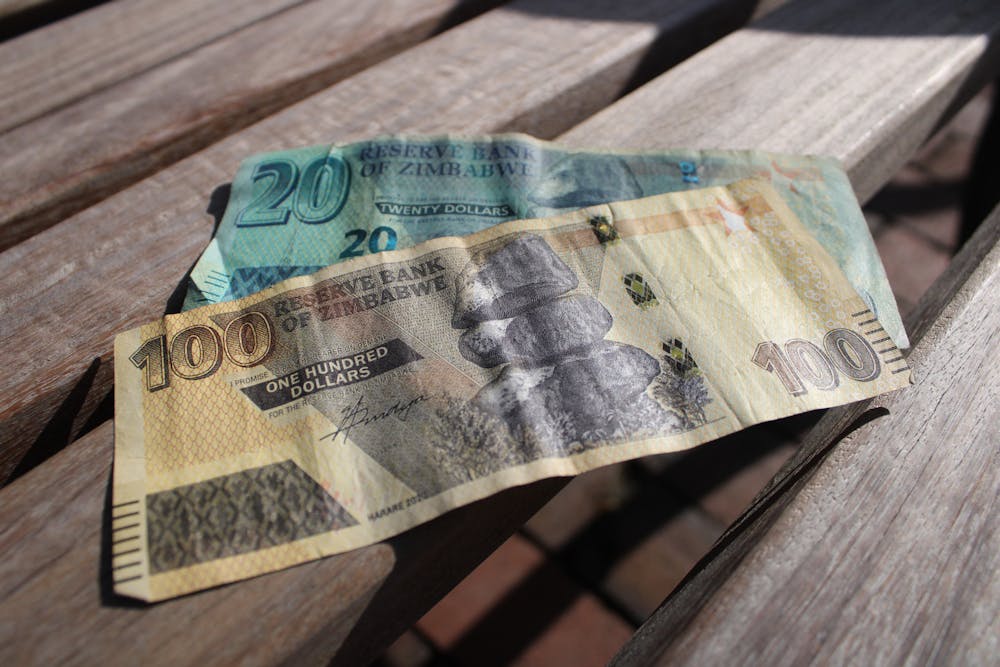
Lincoln Nyarambi, a student from Zimbabwe, (E ‘25) shares that the two–dollar bond notes feature images of the Chiremba Balancing Rocks, a geological formation found in Epworth. Lincoln shares that these rocks hold cultural significance “as a symbol of balance and harmony.” On the reverse side, there are various images of Zimbabwe’s wildlife and landscape which Lincoln says “emphasizes the nation’s natural beauty and rich biodiversity.”

While Zimbabwe has experienced a turbulent economic landscape, the images on the bond notes emphasize the natural beauty of the country.
At Penn, international students have had to adjust from bright and beautiful money from their home countries to the boring U.S. dollar. However, knowing how special and colorful their money is brings a sense of pride and honor.
At Penn, international students have had to adjust from bright and beautiful money from their home countries to the boring U.S. dollar. However, knowing how special and colorful their money is brings a sense of pride and honor.
And we all know, money doesn’t grow on trees—collect those coins and cherish those bills.


